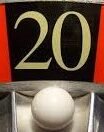FORGOTTEN VEGAS: Quickie Divorce Tourism and Hoot Gibson’s D4C Casino Ranch
[ad_1]
Posted on: October 3, 2022, 12:14h.
Last updated on: October 3, 2022, 01:03h.
Today, getting an uncontested, no-fault divorce is no problem in any US state. But in the first half of the 20th century, most state laws actively discouraged civil disunions. In New York, the only way to get a divorce — up until the 1960s — was to prove adultery.

But Nevada never met a divorce filing it didn’t like, and it had one of the nation’s shortest residency requirements. This made the Silver State America’s divorce capital throughout the 1930s and 1940s. A cottage industry exploded in Las Vegas and Reno, which included “divorce ranches” vying to keep people housed, fed, and entertained while they waited to uncouple.
Technically, Nevada granted divorces on nine grounds: adultery, insanity, impotence, desertion, felony conviction, habitual drunkenness, failure to provide common necessities, living apart for three years, and extreme mental cruelty. However, officials didn’t really require proof, and divorces were liberally rubber-stamped. That’s why Marilyn Monroe became a Nevadan at the age of 20. Her Las Vegas divorce from her first husband, factory worker James Doughtery, was one of more than 19K divorces Nevada granted in 1946.
Establishing residency required living in the state every day for six weeks straight. On this point, Nevada was strict. So, Las Vegas residents turned their homes into boarding houses and rented out spare bedrooms. For prospective divorcées with a little more money, living the Western lifestyle glamourized by Hollywood was another option.
On divorce ranches, guests could work out their marital frustrations by engaging in strenuous outdoor adventures. They could find a sympathetic ear in others going through the same pain. And they could, perhaps, even fall in love and return to Nevada for another quickie divorce one day.
A Hoot Given for Divorce Seekers

Edmund Richard “Hoot” Gibson was one of the top box office stars of the silent Westerns of the 1920s, earning an almost-unheard-of $15K a week. By the 1930s, however, he was knocked off his saddle by singing cowboys Roy Rogers and Gene Autry. His non-musical star faded, and Gibson shot his final Western in 1944. Two years later, a group of L.A. investors approached him with a proposal for Hoot Gibson’s D4C Ranch in Las Vegas.
Gibson knew a thing or two about divorce. He had three before marrying his fourth (and final) wife, Dorothea Dunstan, in 1942. This at least partially explained the dwindling of his former fortune, and why he jumped at the proposal.
In addition to a casino and bungalows, the 80-acre ranch boasted a rodeo stadium, clubhouse, Western-themed restaurant, and horseback riding. To get there, the investors built an airfield, a dedicated train depot, and a mile-long private dirt driveway that would, in the late ‘60s, become Spring Mountain Road.
The D4C did decent business for four years. Then, other US states began liberalizing their divorce laws. The easier divorces became to get, the harder Nevada’s divorce ranches became to sell. Gibson’s investors unloaded the D4C land in late 1950 and, today, it’s occupied by Las Vegas’ Chinatown.
To get by, Gibson earned money as a greeter at the Last Frontier casino and hawked chinchilla breeding on a 1954 infomercial.
Hollywood old-timers still had a soft spot for Gibson. John Wayne gave him a small part in his 1959 Western, The Horse Soldiers, and Gibson appears in an uncredited cameo in 1960’s Ocean’s 11 as a sheriff’s deputy. That same year, he finally received a star on the Hollywood Walk of Fame. Two years later, a destitute Gibson died of cancer at age 70 at the Motion Picture Country Home in Woodland Hills, Calif.
A podcast about Gibson’s dispirited final years, Hoot Gibson: Vegas Cowboy, was released in 2016, starring Weird Al Yankovic and comedian Paul F. Tompkins. Chips from the D4C’s casino routinely fetch $80 each on eBay.
“Forgotten Vegas” is an occasional Casino.org series featuring historical remembrances of Las Vegas’ past.
[ad_2]
Source link
